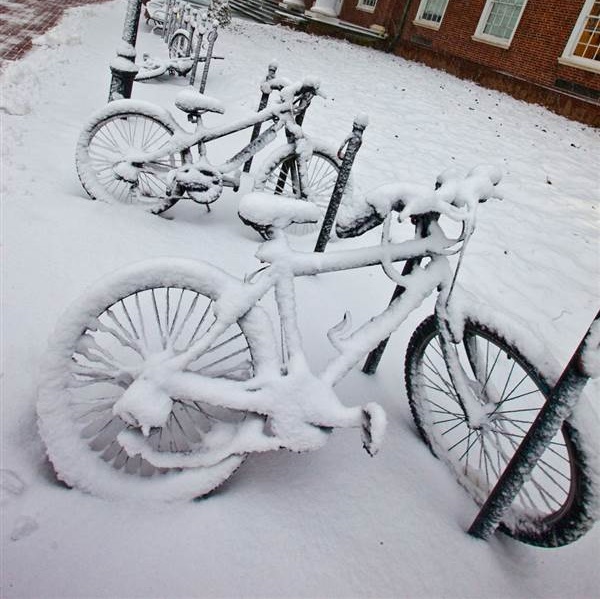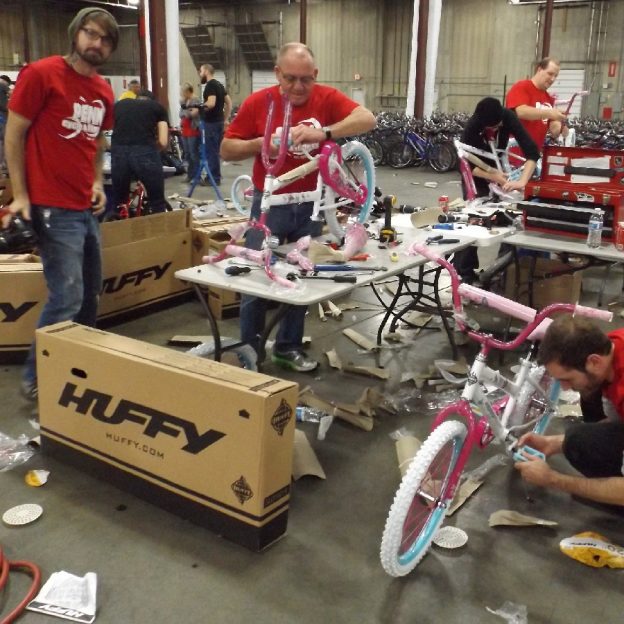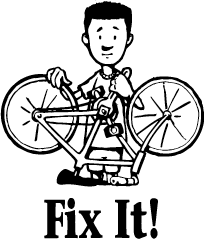by Jess Leong, HaveFunBiking.com
If you’re like the many people who ride bikes, you may have selected or been forced to use outside bike storage where your bicycle has to fend for itself in all the elements. It’s nothing to be ashamed of, especially since many people don’t have a place to store their bikes inside.
We mentioned in a previous article that if you’re unable to store a bike indoors, that you can usually find a nearby bike shop that can store your bike for you – especially through the winter. However, sometimes even this isn’t possible and outside bike storage is your only option. Perhaps there are no bike shops that offer that service nearby, or perhaps the cost in doing that would be out of your budget. Whatever the reason, here’s what you need to know to store your bike outside for a couple day or indefinable.
What Happens When You Use Outside Bike Storage for your Bicycle
As many can guess, bikes left outside in rain or snow can rust.
Newer bikes fare better in the outside elements because the seals on the bike’s components are tighter than on older or more worn bicycles. Being well-sealed allows it to block out moisture from making its way inside and corroding the bike from inside and out. Leaving these new bikes out for a few days or even a week might not be a problem. However, the longer it is left outdoors, the more problems the rider will see – this is especially true for older bikes. Older bikes can degrade faster since they have been weathered down over time.
What you can expect to see is rust forming on the chain and gears before affecting the rest of the bike. This can make the drivetrain brittle over time, and cause problems when shifting gears and riding.
We know rain and moisture can cause problems, but did you know humidity and heat can also be a problem? In the summer, keeping your bike in direct sunlight can cause problems in certain areas on your bike as well. The direct light can cause rubber and plastic to harden, leaving tires, seats, grips, and cable housing brittle.
Additionally, bikes that are left outside also run the risk of being vandalized or stolen. According to the National Bike Registry, over 1.5 million bikes are stolen every year with less than 3 percent being returned. Besides running the risk of corrosion, you run the risk of never seeing your bike again.
What You Can Do If Using Outside Bike Storage
Place a Bike Tent Over Your Bike
It’s not recommended to place a tarp directly on your bike because it can work like a green house, accumulating heat and moisture. Heat can affect your plastic or rubber parts and degrade them. When it’s cold or rainy, it can trap the water vapor. The moisture can then settle on your bicycle, corroding it.
A bike tent, however, allows a shelter from the elements, while also allowing air to circulate any moisture away. Bike tents aren’t expensive compared to some options and are generally easy to put together.
If your bike does get wet, wipe down the bike so the water doesn’t sit to long.
Lube and Grease Your Bike – Especcially with Outside Bike Storage
Place waterproof grease over areas that might be breached by water, such as screw holes, bolt heads, or bearings. The grease will create a barrier against water, stopping it from getting through. Lubing up your chain and other appropriate parts of the bike is also a helpful way to create a barrier from any moisture. Using a wet lube rather than dry lube is key. Dry bike lubricant will wash away easily and doesn’t provide any protection from corrosion.
Use the Bike
This doesn’t mean you should ride the bike outside during a blizzard. Instead, lift it up and turn the pedals. Moving it around can help with reducing rust. Over time, dust, dirt, or grime can get into the shifter and fine mechanical parts, so using the bike can knock this stuff off – especially if you’re riding it.
Remember, the salt from the road can affect the bike! Salt affects aluminum or alloy parts. So, if you take it for a spin, make sure to wipe down your bike afterwards and clean it.
Replacing Components to Last
Many factors affect how quickly and badly a bike can corrode. While storing a bike indoors is the best option, sometimes it’s not possible. Following the above steps should help minimize the buildup of rust. It can also limit mechanical problems that may occur.
Trying to limit corroding factors is the best you can do. Some people who know they will store bike outside under a cover or in a bike tent will opt to spend extra money to ‘upgrade’ their bikes. The bikes they tend to buy are already considered ‘durable’. Then, they change out parts to other materials that are less likely to rust over time. Some bikers also will opt for a ‘rustproof’ labeled chain. If this isn’t possible, then frequent bike maintenance and greasing is the way to go. This ends up being the key factor that many bikers rely on if they are storing their wheels outdoors.
Be aware, if you store your bike outside, there will be more maintenance required than if you stored your bike indoors. Keeping up with this maintenance might seem a little daunting, but it is well worth the effort. Why? Because come spring, your bike will be ready to go and have minimal rust and problems.


